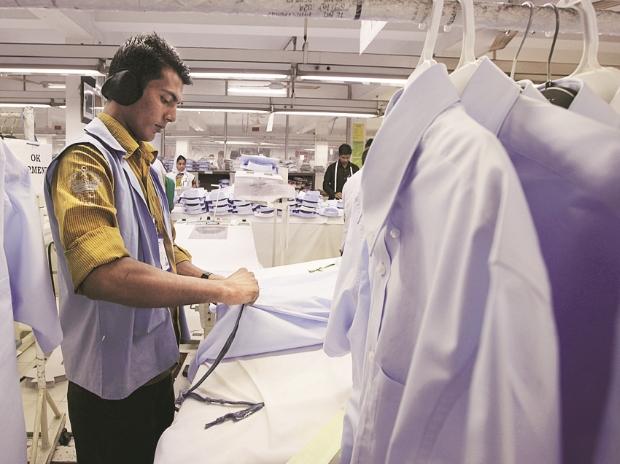Published in Business Standard on March 06, 2018

If the 10-month data from April 2017 to January 2018 is anything to go by, India’s apparel industry may post a rare decline in exports for the current fiscal 2017-18, let alone meeting the $20 billion target.
While India may have reported a 6-20 per cent growth in apparel exports to different destinations such as the US, UK, Germany, France and Spain during November-December 2017, overall exports in the sector are down by one per cent for the 10-month period of this year.
Global factors such as free-trade agreements of competing nations with key markets like Europe, the UK and the US had already been posting a challenge to Indian ready-made garments (RMG) exporters. However, post Goods and Services Tax (GST) implementation in July 2017, reduced export incentives coupled with delay in input credit refunds have further accentuated the industry’s woes.
Data shared by industry body Apparel Export Promotion Council (AEPC) shows that India’s RMG export to world in the April-January of 2017-18 was to the tune of $13,783.4 million. down 1.27 per cent compared to the same period of previous financial year. During April-January 2016-17, India’s apparel exports were to the tune of $13,960.2 million.
According to AEPC and rating agency Icra, the decline has been primarily driven by the sharp decline in exports to the UAE market. This has been augmented by dismal global apparel trade which remained subdued at a mere one per cent growth in calendar year 2017, following a decline of two per cent and five per cent in 2016 and 2015, respectively.
 As per Icra, particularly for the ten-month period ending June 2017, India’s apparel exports to UAE had grown at a sharp pace of 56 per cent year on year (YoY). “Thereafter, apparel exports to the UAE have fallen at an equally fast pace, by as much as 45 per cent since June 2017. Excluding the trade with the UAE, India’s apparel exports are estimated to have stood 3-4 per cent higher in 10 months of FY2018,” Icra stated.
As per Icra, particularly for the ten-month period ending June 2017, India’s apparel exports to UAE had grown at a sharp pace of 56 per cent year on year (YoY). “Thereafter, apparel exports to the UAE have fallen at an equally fast pace, by as much as 45 per cent since June 2017. Excluding the trade with the UAE, India’s apparel exports are estimated to have stood 3-4 per cent higher in 10 months of FY2018,” Icra stated.
HKL Magu, chairman of AEPC told Business Standard that the industry will not be able to reach the target of $20 billion of apparel exports.
“The implementation of GST since July has resulted in blockage of funds for the export community due to lack of input credit refunds.
Except for a few exporters, hardly anyone has received refunds since last eight months. Exporters don’t have money to pay to suppliers. Secondly, export incentives such as duty drawback and rebate on state levies (ROSL) have been reduced,” said Magu. While duty drawback rate and rebate of state levies (ROSL) were lowered to two per cent from 7.5 per cent and 3.9 per cent, respectively in the post GST era, incentive under merchandise exports from India scheme (MEIS) was increased from two to four per cent.
However, with the MEIS deadline expiring on June 30, 2018, the industry is uncertain of taking orders beyond the date on the basis of a higher incentive. “If they don’t renew it then we will be unable to book orders beyond June because we are unsure if MEIS will continue after that. We will lose money if we assume four per cent incentive beyond June and the government does not extend it,” said Magu.
Already, global factors have been rendering Indian RMG exporters uncompetitive. “While China has vacated the apparel export space, India is unable to encash on the opportunity unlike Vietnam, Bangladesh or Cambodia who have free trade agreements. India is emerging as an expensive affair in the global apparel market,” Magu stated.
Supported by its duty-free access to the EU market, Bangladesh retains its status as the second-largest apparel exporter after China. Vietnam remains the fastest growing amongst large apparel exporting nations, maintaining its growth in the US market despite the latter backing out of a proposed trade agreement.
Further, Jayanta Roy, Senior Vice-President and Group Head, Icra is of the view that the competitiveness of the Indian apparel exporters will also remain contingent upon the movement in foreign exchange rates.
“This remained a key challenge last year, with the Indian rupee appreciating by three per cent (vis-à-vis US$) in calendar year 2017 compared to 1-3 per cent depreciation in currencies of other key apparel exporting nations (i.e China, Bangladesh and Vietnam),” said Roy.
 CPD RMG Study Stitching a better future for Bangladesh
CPD RMG Study Stitching a better future for Bangladesh



